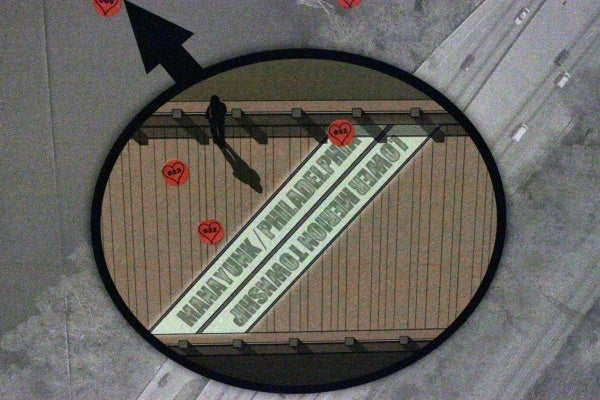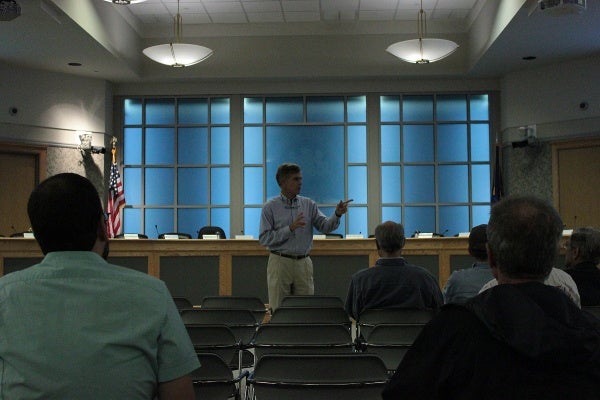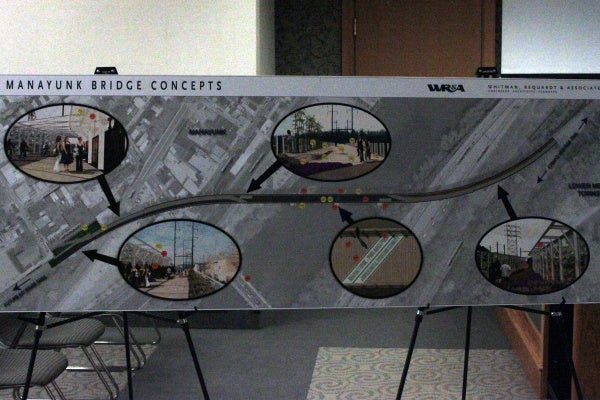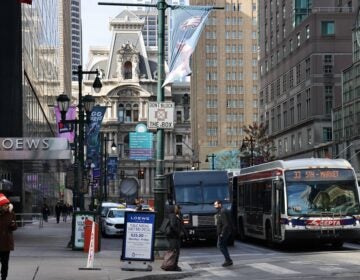‘Exciting but daunting’ Manayunk Bridge trail project continues on limited time frame
Manayunk and Lower Merion have never been more neighborly.
Last night, 50 residents of both city and suburb converged in Ardmore to discuss design plans for a multi-purpose trail across the iconic Manayunk Bridge.
The trail project is a collaborative effort between several agencies, and brings together the City of Philadelphia, the Schuylkill Project and the Township of Lower Merion, in addition to SEPTA, the owner of the bridge.
Looming large over Main Street, the Manayunk Bridge terminates at Dupont & High Streets – the site of a former train station – and would be used to connect the Ivy Ridge Trail to the Cynwyd Heritage Trail in Montgomery County.
The meeting, held in the boardroom of Lower Merion Township’s administration building, lasted approximately two hours and was facilitated by the bridge’s project manager, Jeffrey Riegner.
Riegner is Vice-President of Whitman, Requardt, and Associates, the Wilmington-based firm that was awarded the contract earlier this year to turn the former rail-bed into a platform for both transportation and recreation.
“It’s exciting but daunting,” said Riegner, in response to the task of conceptualizing the trail.
“The challenge is to balance active uses of the bridge – walking, biking, and commuting – with passive uses – like hanging out – all in a fairly limited space,” he said, in reference to the rail-bed’s 28-foot width.
Considering neighborhood contrast
Of equal concern is the relationship between the contrasting aesthetic properties of Manayunk and Belmont Hills – or, as Riegner’s colleague Fred Hiser put it, “the transition from industrial to idyllic.”
To do so, Riegner and company are incorporating elements of each terminus into their design.
“We’re making our design true to the area, in order to add rather than detract, and all within a consistent design concept,” said Riegner.
“In Manayunk, we’re focusing on the linear, using man-made materials – metals and concrete planking – that are industrial in feel and reflect the gritty industrial heritage [of Manayunk].”
“In Lower Merion, we’re focusing on natural materials that are meandering and consistent with the design of the [Cynwyd] Heritage Trail.”
In addition, Riegner hopes to incorporate local artists in the completion of the design. Coupling mosaic with sculpture – as well as possibilities for a stage or amphitheater – he also envisions a place for schoolchildren to contribute their own artwork.
“I’m really excited about having spaces for community art,” he said.
When architectural designs incorporate the artistic expressions of local residents, Riegner explains, “they become part of the bridge, and that roots it in the community.”
Within that community, however, there are numerous factors to contend with.
“There are a lot of constraints, a lot of competing forces, and lots of different people have different opinions,” Riegner said.
Tight deadline constraints
Among the constraints is a very limited time frame.
As part of 1.3 million-dollar construction grant provided by PennDOT Community Transportation Initiative, the design and approval process must be complete by the end of July 2012 in order to assure completion of the trail by spring 2014.
“This type of project would normally take two years,” said Riegner in regard to the design, “but as we have just under a year, we have to move very fast.”
Assisting them in the race is State Representative Pam DeLissio, of the 194th legislative district, which includes both Philadelphia and Montgomery counties.
“I’m particularly excited about this complex and complicated, multi-government project,” she said at the meeting.
“Projects like this can get stuck on stupid,” said Delissio, “and it’s my job to help you overcome these hurdles.”
Speed enforcement
Among the competing forces are pedestrians – be they walking or lingering – and bicyclists.
Several in attendance voiced concerns over the potential hazards of intermingling walkers and bikers, citing the threat of collision that faces current users of the Kelly Drive path.
To combat speeding, Riegner said that that the concrete planking used will create “visual and tactile cues” to slow down bikers.
When rebutted with the possibility of using gravel or other rough surfaces, Riegner stated that accessibility is a prerogative – and an ADA mandate – and therefore smooth surfaces are obligatory.
He also emphasized that the primary goal of the current design is to slow down bicyclists without their need to dismount.
Calling attention to the bridge’s relatively short length – just under 2000 feet – Riegner said it would normally take about a minute and half to traverse it on a bike, and added that even the speediest of cyclists would only shave “10 to 20 seconds off of their commute.”
Safety first
Safety was also on the forefront of participants’ minds.
Christopher Leswing, Assistant Director of building and Planning for Lower Merion, addressed these issues, stating that “security is going into all facets of design.”
He pointed to the Cynwyd Trail’s system as a possible model, detailing that there are there four emergency access points and a series of enumerated signs which would help locate and find someone in distress.
“Since practically everybody has a cellphone, you would simply call up and say ‘I’m at number 23’ and someone knows where you are and can get to you right away,” Leswing explained.
He said that although “trail rights” would probably go to Lower Merion – “There’s no sense in ending [ownership] in the middle”, said Leswing – responsibility for both public safety and maintenance would be shared between Lower Merion and the City of Philadelphia.
“This is a 21st-century public space,” Leswing concluded, “and we want it done right.”
If it’s done right, the impact could be considerable.
Kay Sykora, Director of the Schuylkill Project, believes that a completed Manayunk Bridge trail would help define Manayunk over in the coming years.
Moreover, she sees it as a bike-based, recreation-based, “connector” between suburb and city – one that, in her words, “takes people to places they’ve never been, but in a leisurely way, when they have the time.”
WHYY is your source for fact-based, in-depth journalism and information. As a nonprofit organization, we rely on financial support from readers like you. Please give today.









